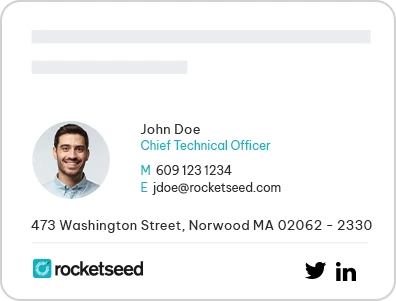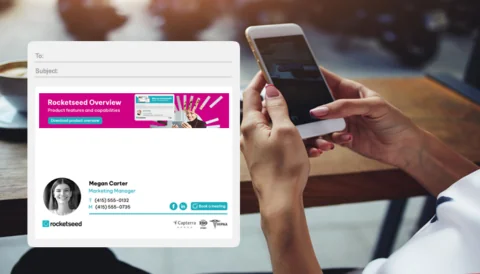
While sending an email has become as commonplace as breathing in an office environment, many people still struggle to navigate the etiquette surrounding the most popular form of business communication.
How should you start your email correspondence? How should you sign off? Is it better to opt for short and sweet or to make each point crystal clear?
When you really think about it, the world of email is full of potential pitfalls that could be costing you more business than you care to think about. From always writing a clear subject line to never trying to be funny, keep reading to discover all the professional email dos and don’ts you need to know about.
DO use a professional greeting
If you are tempted to write “hey” or, even worse, “yo” as your email salutation, then you should know that this is never a good idea. It doesn’t matter how well you know the recipient. If you are sending a work email, you need to maintain some level of professionalism.
Instead, opt for “hello” or “hi” if you know the person very well and are on friendly terms or, if you want to be more formal, say “Dear (insert name).
In fact, whether you are writing a formal or informal professional email, it is also preferential to include the person’s name at the start of the email, as this can automatically make them feel more at ease and amenable to your request.
DON’T try and be funny
The problem with humour by email is that it is very easy for the meaning or tone to be misinterpreted. At best, this can result in an awkward exchange and, at worst, you could offend the other person and ruin your future working relationship.
As a rule, it’s best to keep humour for face-to-face meetings and phone calls, and keep your emails clear and to the point.
DO create an email signature
In today’s digital workplace, everyone should have a professional email signature. If you are currently just signing off with your name at the end of each email, then now is the time to embrace the power of a business email signature.
At the very least, you should be including your job title, contact details, and company website. You can easily get these right by following our best practices for adding contact information on an email signature. However, you may also want to add links to your business’s social media pages, links to events, and even links to your blogs or relevant brand news.

DON’T forget to proofread
If you have to reply to hundreds of emails a day, you can be forgiven for firing off a few without reading them through. However, if, more often than not, you are sending important emails without proofreading them first, you could be setting yourself up for a whole host of problems.
From grammatical errors to silly spelling mistakes, inappropriate language to sentences that just don’t make sense, if you don’t check over what you have written before you click send, you could be perceived as careless and even uneducated.
DO write a clear subject line
It’s the first element of an email that people see, so you need to make sure that you write a compelling, clear, and concise subject line. This is especially true if you are sending a pitch or reaching out to someone you haven’t corresponded with before.
Most businesses receive hundreds, if not thousands, of proposals each day, so you need to ensure that yours stands out from the crowd. Make sure your subject line is clear about what your email is about but that it also demonstrates what makes you different from other pitching companies.
DON’T use emojis
Everyone has received emails that include an emoji or two, and while it may seem harmless, these winking and smiling faces can actually have quite a detrimental effect on how you and your company are perceived.
Although perfectly acceptable to use in text messages or via live messaging, emojis are not professional, and they can significantly lower the tone of an otherwise professional and engaging email.
DO reply swiftly
While no one expects you to reply to every email right away, there is a specific timeframe that you should aim to adhere to, and this is 24 hours. If the email in question requires a more thorough response, then there is nothing wrong with a simple reply that states a suggested longer timeframe.
Not replying at all within 24 hours can come across as rude and unprofessional and can cost your business considerably in the long run. If there are extenuating circumstances as to why you have not replied to an email for a long period of time, you should ring the person directly to explain rather than send an email.
DON’T forget to close the conversation
All too often, emails are sent back and forth unnecessarily because neither party has closed the correspondence. Fortunately, this is very easy to fix. All you need to do is make sure you include the right phrase based on what you would like the recipient to do next.
For example, if no further action is required, you could say “no reply necessary” or “please let me know if I can be of further assistance”.
And finally,
DO sign off correctly
You wouldn’t end a face-to-face meeting without saying ‘goodbye’ so, in the same way, make sure you give all your emails an appropriate sign-off. This applies even if you have an amazing, professional email signature.
In choosing your sign-off, consider the content of the email, the formality or informality of the message and how well you know the recipient. From ‘Yours sincerely’ through to ‘Cheers’, our guide on how to sign off on an email correctly will help you get it right every time.

If you can learn these dos and don’ts of creating professional emails, you’ll make a bigger impact every time you click that send button.
Sign up to our monthly newsletter for more email signature news, case studies and tips and tricks.
Shanique Brophy | Marketing Executive
Connect with Shanique on LinkedIn




